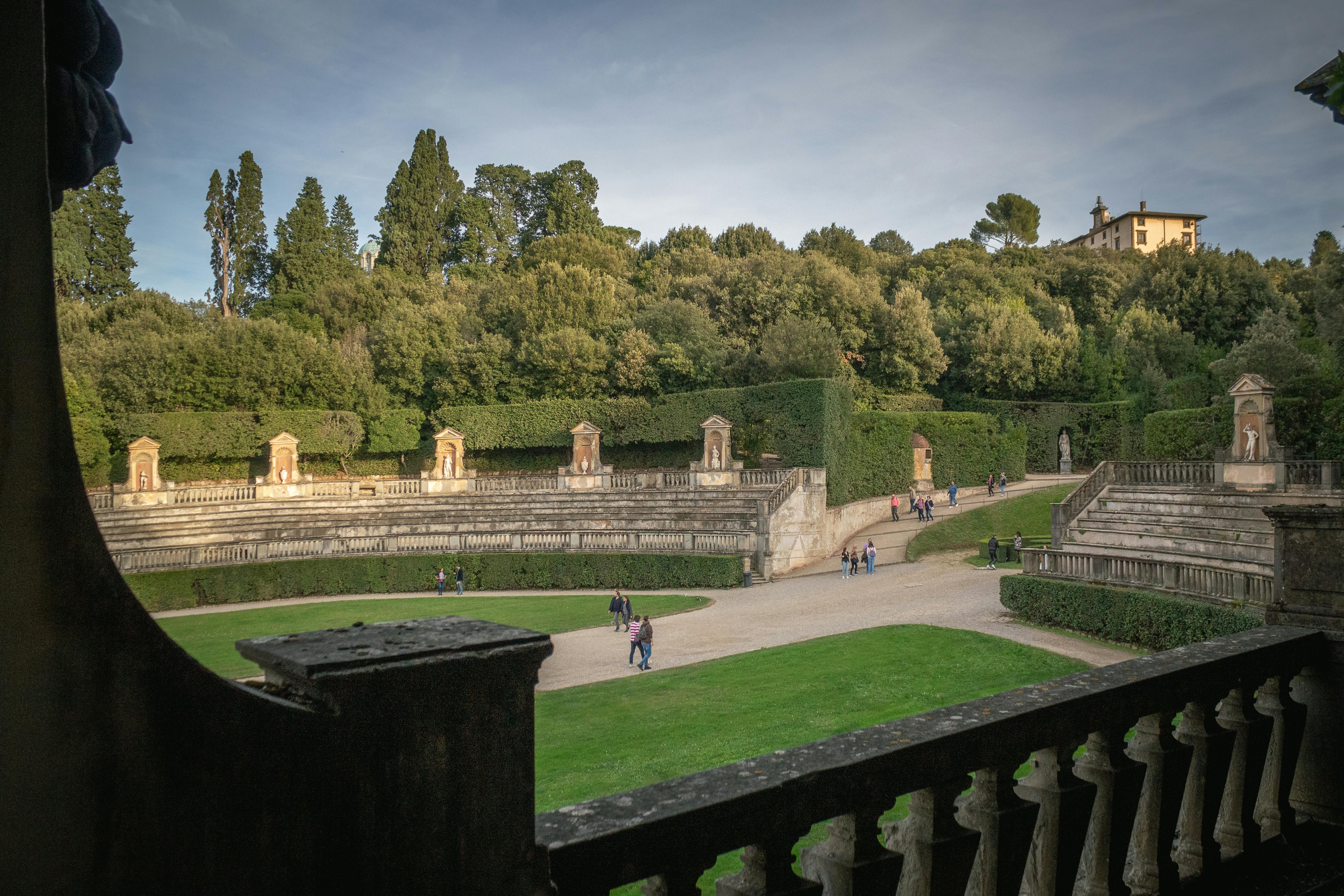History | Boboli Gardens
Begun in 1549 and designed by Niccolò Pericoli, known as Tribolo, for Duchess Eleonora of Toledo, the Boboli Gardens are one of the most important examples of an Italian garden. On a hillside behind the Palace, the Gardens are arranged geometrically with a symmetrical, regular positioning of trees and flowerbeds. It was decided to begin the planting of hedges and trees, rare and wild plants and the construction of the fountains immediately. These innovative ideas would make Boboli one of the most significant gardens, worthy of a grand ducal residence. Unfortunately, Tribolo died soon after and the work was taken over first by Bartolomeo Ammannati and then by Bernardo Buontalenti. The Grotto of the Madama, realized between 1553 and 1555 in order to recreate a natural environment populated by mysterious stone beings and animals, was one of the first important constructions. Between 1583 and 1593 a large grotto, known as Buontalenti Grotto, was constructed by Bernardo Buontalenti in place of a nursery designed by Vasari. This spectacular grotto was built with limestone concrete stalactites, shells and terracotta reliefs, with water running down the walls providing vivacity and colour. In 1631 Giulio Parigi transformed the Amphitheatre from garden architecture into masonry architecture with the installation, in the first half of the 18th century, of the Egyptian obelisk originally from Luxor but more recently from the Medici’s Roman collections and the basin from the Baths of Caracalla in Rome. The Statue of Abundance, begun by Giambologna and completed by PietroTacca, dominates the whole complex from above. Under Grand Dukes Cosimo II and Ferdinando II de’ Medici the Gardens were enlarged by Giulio and Alfonso Parigi to the South, parallel to the Palace within the city walls. The Viottolone is a wide central avenue at the end of which Alfonso Parigi designed a large elliptical basin with a central islet, both populated by statues of fantastical and mythological figures. The Ocean, a monumental statue by Giambologna, was placed in the centre of the Island. In the second half of the 18th century, under Grand Duke of Tuscany Peter Leopold, the first of a series of substantial interventions by architects such as Gaspare Maria Paoletti, Giuseppe Cacialli, Pasquale Poccianti and Zanobi del Rosso were commissioned. The latter was commissioned by Peter Leopold to construct two complexes that were vital to the completion of the layout of the Gardens: the Kaffeehaus and the Lemon House. The Kaffeehaus is a stylish pavilion perched on the hillside and was a pleasant stop in walks taken by members of the Habsburg-Lorraine court; whereas the Lemon House was erected in place of the zoo Cosimo III had built for exotic animals of all sorts. The new building was for citrus fruit trees (about 500 earthenware tubs) collected by the Medici in the 16th century.
